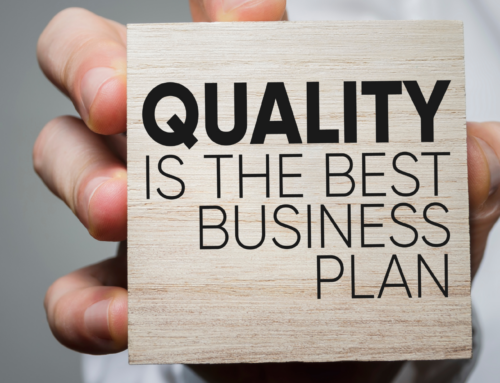If You Wait, You Might Be Too Late!
Are your products being adequately tested before they leave your supplier? Are you relying on your customers for product quality feedback? Of course, allowing customers to share their experience with a product is a beautiful way to build relationships, but it shouldn’t be your primary product feedback source. Reviews of products can be incredibly resourceful; nevertheless, if your products aren’t being adequately tested before shipping you may want to rethink your Quality Control processes and procedures. Do your best to avoid being blindsided by honest customers using your product.
March 18, 2021
What Are Product Defects?
Not all products are perfect. Although, quality issues are unavoidable, are your product quality defects addressed before it’s in your customers’ hands? Or are your customers the ones reporting your product’s defects?
During a product’s inspection, the product is tested according to its Acceptance Quality Limit, also known as an “AQL.” The AQL provides Quality Assurance teams a guide as to the maximum number of tolerable defects a product is permitted. Suppose a product’s defects go over the allowed number of defective units. In that case, this product run is considered “unacceptable” or “no good,” meaning the product’s specifications and manufacturing process will need to be revised prior to the next scheduled product run.
![]()
What Constitutes Product Rejection?
Within the AQL, there are three different levels of product defects: critical defects, major defects, and minor defects. While these three defects offer various product quality complications, the result is the same: dissatisfied customers. These defects may be due to design defects, which is a defect that results in a faulty product.
Rather than a single batch of products being pulled for this defect, design defects affect the entire product line. To put it simply? It’s time to wipe the slate clean and start fresh; otherwise, if it’s a manufacturing defect, these typically result in a single batch or small group of product units being affected. If it’s a labeling defect, it affects both the design and manufacturing of a product. Labeling defects typically lack critical information about the contents within the packaging or product. Failure to have this important information listed can lead to serious safety hazards and safety risks for prospective customers.
In summary, design, manufacturing, and labeling defects are the three types of product defects that can affect your product; however there are three levels that these defects will fall into:
![]()
How Serious Is The Defect?
Critical Defects
Also known as the most severe type of product issue, critical defects deem a product unsafe or hazardous. Critical defects are what lead to product recalls, liability issues, and company lawsuits. During product inspections, particularly pre-shipment inspections, products containing a critical defect are immediately pulled from production, automatically failing inspection. In this case, it’s back to the drawing board; and while that may seem like a hassle, it’s a lot better knowing your product isn’t endangering your customers.
Sharp edges or points that could harm the user? Mold spots? Loose wiring? Potential part breakage? Loose screws/nails? All of these defects pose substantial liability issues. Take the time to thoroughly inspect your products and ensure they are being manufactured with attention and care.
Major Defects
Though not as hazardous as critical defects, major defects still pose a serious concern for customers. Major defects affect the performance of a product. Customers are looking for product functionality and efficiency. Thorough product inspections and reviews will ensure your products are customer-ready before they are shipped from the supplier. Identifying major defects is a lot easier to control and make revisions when it’s in the supplier’s hands rather than the customer.
A crack in a glass jar? A loose button? An open seam on a t-shirt? These are product defects that customers do not take lightly and can affect any relationship, business to business, or consumer. Returning products or eliciting product recalls can cost companies a lot in excess expenses. By enduring rigorous product inspections and testing, you’ll identify these major defects thus alleviating the stress of the unknowns and allowing your company and suppliers to make adjustments to products before it ends up in your consumers’ hands.
Minor Defects
Under these circumstances, depending on the product quality issue, it may or may not deter your customers. Minor defects to products may not be identifiable but are still unacceptable. Customers may not notice the product defect immediately; as a matter of fact, the product may still elicit poor customer relationships and appear negligent. Why risk it? Don’t let the little things go. Pay close attention to product details and ensure your products are continuing to meet AQL.
Loose loops on the threading of a shirt? Dirty mark on the glass jar? A removable warning label on an electronic product? While these examples are not necessarily life-threatening or hazardous, they do constitute poor quality that requires immediate action. Small defects can undoubtedly turn into severe defects. Eliminating these defects while they’re minor has the potential to reduce risk, steer clear of recalls, and lessen the potential for liability and company lawsuits.
![]()
The Price You Pay Having Your Customers on the Front Line:
Are customers dissatisfied with your product? How frequently are your products being returned due to quality concerns? Is there a particular product that isn’t meeting your customers’ standards? Or, is it several products? If yes to these questions, essentially, your customers are completing your quality assurance inspection for you. In the meantime, this can affect your business, your growth, and your customer’s relationship with your brand if you continue to let poor quality products into the hands of your customers.
It’s Not Just About The Product. What Message Are You Sending?
How are your customer relationships? Are you experiencing frequent customer complaints? Are you maintaining customer relationships or experiencing low customer retention? It’s critical to pay attention to your quality reports. Of course, you may have a quality team inspecting your products, but are you actively listening to the feedback that you’re receiving? Simply, “letting it go” sends a poor message to not only your customers but your suppliers, your quality assurance team, and your company. By disregarding quality concerns, your suppliers may begin to neglect your product’s value. Under these circumstances, minor product defects can become more critical over time if one overlooks product quality. As a result, your company and quality team may begin to follow your lead.
Lead by example. Care for quality and practice good habits. Besides, not only do your customers deserve high quality, but your team and suppliers do, as well.
How Can HB International Assist You?
Our exceptional team of project managers and quality assurance is ready to get you the high-quality products you need when you need them. Our manufacturing agency is responsible for ensuring your products meet your expectations. We follow each product’s particular AQL requirements and product specifications while making routine product inspections. We work with you to make sure your customers receive high-quality products at an affordable price while simultaneously building and sustaining your business-to-customer relationship.
We’ve assisted many companies in a variety of ways, including but not limited to:
- Identifying and approving suppliers
- Designing customized products
- Creating product specifications
- Establishing in-process control procedures
- Pre-shipment product inspections
- Supplier audits
- Supply chain management
Let us know how HB International can help you!
![]()






